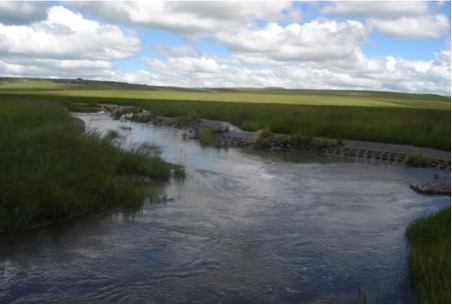Managing water risks exacerbated by climate change makes predictive modelling vital, but at the same time more difficult – Africa’s response therefore needs to embrace flexible solutions through more sustainable engineering design.
The complexity of hydrological processes makes surface water modelling a challenging exercise at the best of times, according to SRK Consulting principal corporate consultant Dr Simon Lorentz.
“As the effects of climate are increasingly felt, we now also have to rethink how we make predictions,” said Lorentz. “We used to be able to predict future rainfall patterns using models based on decades of past rainfall data, but now climate change is removing much of the certainty we had.”
Looking ahead, we now rely more on large-scale atmospheric models which describe how weather patterns form on a global scale and how they are likely to change in the future. Downscaling these into regional or local models, however, requires consideration of many variable factors like distance from the coast, altitudes, hillslope aspects and topography. These global models can also be quite divergent, leading to different results. Predictions are therefore unlikely to be simple or precise, especially as their timeline lengthens.
“Southern Africa’s status as a mostly semi-arid region adds to the complexity of making predictions, as we have always experienced a relatively high level of variability between rainy and dry spells,” he said. “This variability – along with greater frequency of extreme weather events – is now only intensifying with the impact of climate change.”
These conditions require that water demands and systems are managed in a different way to the past – when large dams were regarded as the key strategy for water security. He said that many of the answers are likely to be found in nature that has the ability to absorb the peaks of water supply and create more sustainable water storage platforms within the natural environment.
“This includes making better use of natural features like wetlands to treat and store water, for instance, and exploring opportunities to make more efficient use of the water resource available,” he said.
SRK Consulting principal scientist (Air Quality and Climate Change) Philippa Burmeister emphasised that unpredictable rainfall posed a fundamental risk to most sectors of the economy, and companies were turning to technology to ensure adequate water supplies of the required quality.
“Many companies have in the past been accustomed to abstracting water from rivers or ground water resources and then discharging water from their processes,” said Burmeister. “Where unpredictable rainfall makes these sources unreliable, users are starting to invest more in water treatment and re-use – an important step in climate change adaptation.”
Indirect impacts of climate change, such as, disruption to the generation, transmission and distribution of electricity may also result from water shortages or an increase in the frequency and intensity of flooding. Water shortages could also result in greater competition for water and resultant community unrest. While flood events could disrupt transportation routes and access to raw materials and markets. Changes to rainfall patterns therefore pose significant direct and indirect risks to businesses.
“Predictive modelling remains a vital tool for guiding our decisions on how we design and implement solutions in the face of climate change,” Lorentz said. “These predictions provide us with valuable parameters within which to aim our risk-management interventions. However, we need to recognise there is a level of uncertainty in predictions related to climate change – and we should design for these uncertainties.”
He noted that that sustainable urban drainage systems (SUDS), for example, allowed a dynamic and responsive approach to future design, allowing a higher level of flexibility than traditional ‘hard’ engineering.”Growing risk is certainly driving innovation, and we see exciting potential for strategies and technologies that will leverage the power of nature to find solutions that are flexible and adaptable to our uncertain future. Predictive models however help us to identify and quantify the potential risks so that we know where to focus our efforts,” said Burmeister

